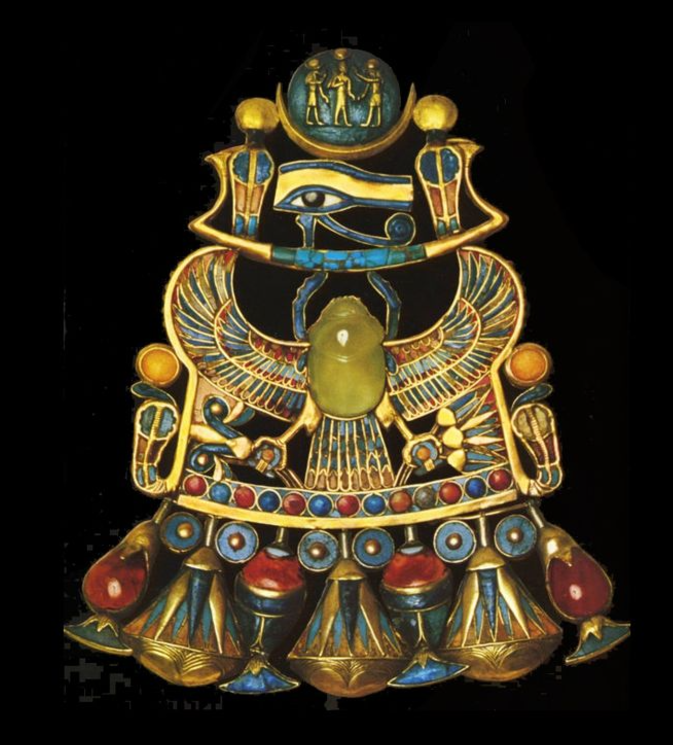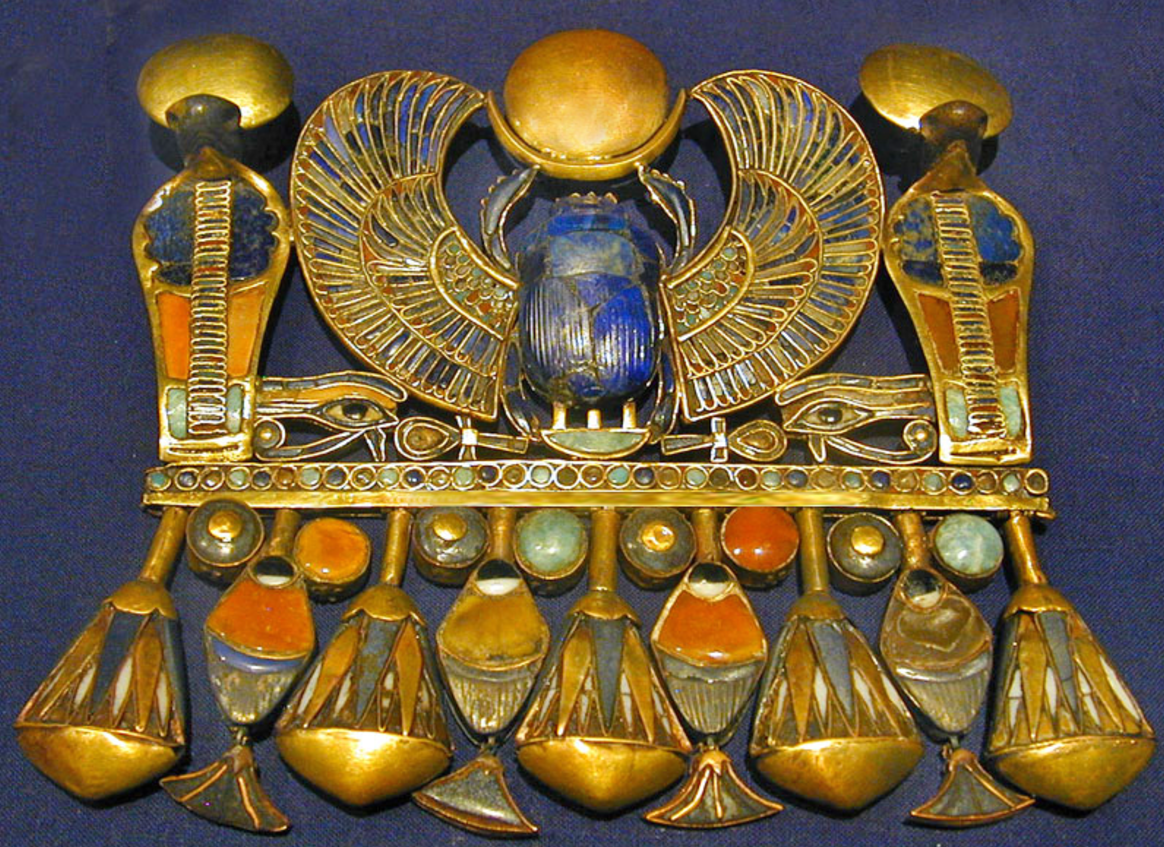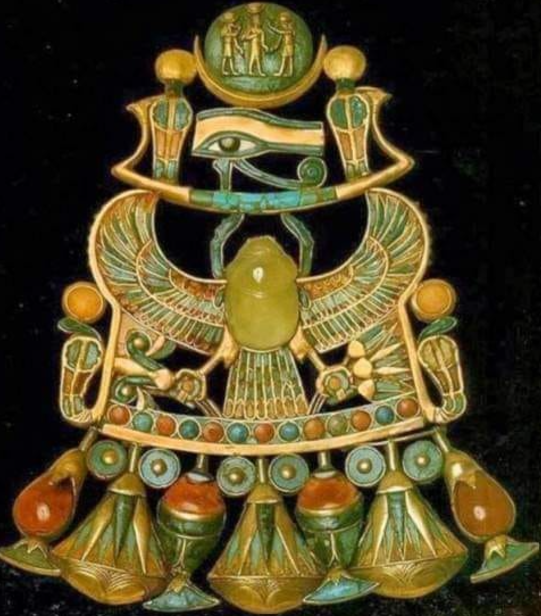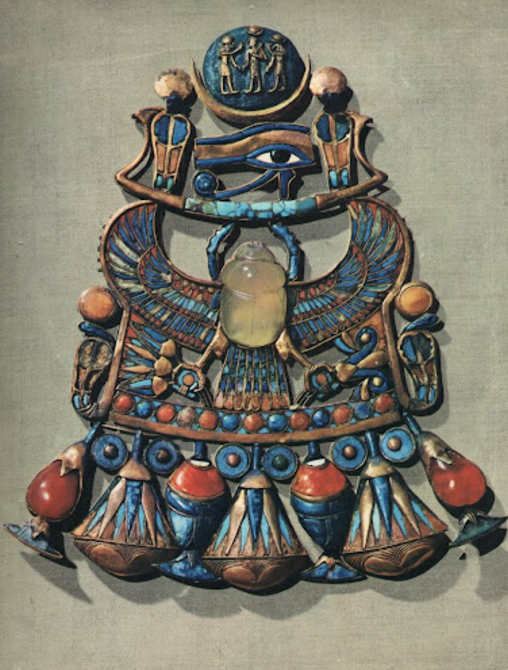The Scarab Pectoral, discovered in the tomb of King Tutankhamun (1341–1323 BC) in the Valley of the Kings, is a spectacular piece of ancient Egyptian jewelry. This masterpiece is not only an example of New Kingdom craftsmanship, but also a profound expression of Egyptian religious beliefs about rebirth and immortality. Currently housed in the Egyptian Museum, Cairo, the scarab remains one of the most iconic treasures of Tutankhamun’s tomb. Follow archeology.dulichvn.net to discover many hidden mysteries that have yet to be discovered.
Origins and Significance of the Scarab Pectoral
Discovery in Tutankhamun’s Tomb
The scarab pectoral was unearthed in 1922 by Howard Carter, as part of the nearly intact treasures of Tutankhamun’s tomb (KV62). Positioned within the burial chamber, it was among the numerous artifacts designed to ensure the king’s successful journey to the afterlife.

Role of Scarabs in Ancient Egypt
In Ancient Egyptian culture, the scarab beetle, symbolizing Khepri, the god of creation and the rising sun, was associated with renewal and rebirth. The scarab amulet was often placed with the deceased to safeguard their resurrection and eternal life.
Design and Craftsmanship
The pectoral is crafted with meticulous attention to detail, incorporating precious materials like gold, lapis lazuli, carnelian, and faience. Its intricate design reflects not only aesthetic beauty but also deep spiritual significance.
Iconography and Symbolism
The Scarab as the Central Motif
At the heart of the pectoral lies the scarab, symbolizing Khepri’s divine power to renew life. The scarab’s role as a harbinger of the sun’s daily rebirth ties it closely to the pharaoh’s eternal cycle of life and death.

Protective Cobras and Crowns
Flanking the scarab are cobras, each adorned with the crown of Upper Egypt. These cobras, known as uraei, served as guardians, offering divine protection to the king both in life and death.
Lotus Blossoms and Solar Imagery
The base of the pectoral features lotus flowers and solar discs, elements symbolizing immortality and creation. The lotus, which blooms anew each day, was a potent symbol of rebirth, while the sun was central to the Egyptian concept of divine power and eternity.
The Pectoral’s Role in the Afterlife
A Guide to the Afterlife
The scarab pectoral was more than an adornment; it served as a spiritual tool. Ancient Egyptians believed that such amulets provided protection, ensured resurrection, and guided the deceased safely to the realm of the gods.

Connection to Osiris and Eternal Life
The imagery on the pectoral connects closely to Osiris, the god of the afterlife. The combination of symbols reflects the belief in resurrection and the continuous cycle of life, death, and renewal, which were central to Egyptian funerary practices.
A Testament to Pharaoh’s Divinity
The pectoral also reaffirmed the divine status of Tutankhamun. By incorporating motifs associated with gods, it positioned the king as a divine being destined to ascend to the stars after death.
The Legacy of the Scarab Pectoral
A Masterpiece of Ancient Egyptian Art
The scarab pectoral is an enduring testament to the sophistication of Egyptian craftsmanship during the 18th Dynasty. Its intricate details and harmonious design exemplify the pinnacle of New Kingdom artistry.

Influence on Modern Understanding of Egyptian Beliefs
Artifacts like the scarab pectoral have deepened modern understanding of Ancient Egyptian spirituality. They highlight the civilization’s profound connection to nature, the cosmos, and their gods.
Preservation and Display
Today, the scarab pectoral is preserved in the Egyptian Museum, Cairo, drawing countless visitors and scholars. Its enduring allure continues to captivate those interested in the mysteries of Ancient Egypt.
Conclusion
The scarab pectoral from Tutankhamun’s tomb is far more than a decorative artifact—it is a gateway into the beliefs, values, and artistry of Ancient Egypt. With its rich symbolism of rebirth and immortality, it encapsulates the essence of Egyptian spirituality and their quest for eternal life.
As a jewel of unparalleled beauty and significance, the scarab pectoral stands as a timeless reminder of the ingenuity and spiritual depth of one of history’s most remarkable civilizations. Visitors to the Egyptian Museum in Cairo are privileged to witness this exquisite artifact, a connection to a world where life, death, and rebirth were intricately woven together.

CÁC TIN KHÁC
Mark Twain & Olivia Langdon: A 36-Year Love Story Filled with Laughter and Devotion
The Tollund Man: A 2,400-Year-Old Mystery Preserved in a Danish Bog
Skara Brae: Scotland’s Hidden Neolithic Village
Porta Nigra: The Hidden Depths of Trier’s Iconic Roman Gate